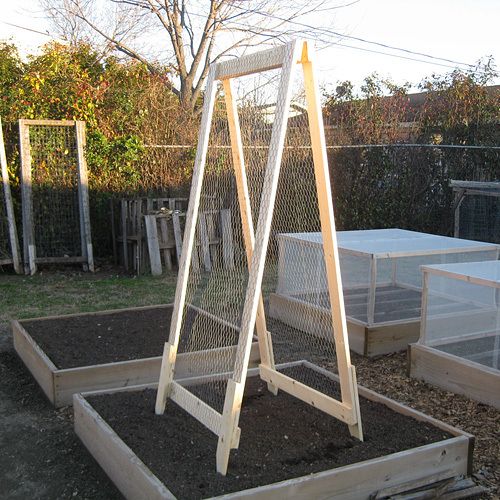
Whether you are trying to maximize your garden space, have limited space in your garden to work with, or simply enjoy the accessibility, growing vertically using a trellis (or two) is the obvious solution.
The Reasons
Saves space. Perhaps the biggest reward, each trellis or support you use maximizes your harvest by using the minimum amount of space.
Healthier plants. When your plants are off the ground, they will stay cleaner, get better air circulation, and are less prone to diseases.
A Better-Looking Harvest. Your vining veggies will have fewer bumps, bruises, and imperfections.
An Easier Harvest. No bending required. Need I say more?
Materials
Wood. Generally, wood trellises are the most affordable option. However, they may not hold up for long-term use. Some types of wood will rot and/or warp, and obviously weather and outdoor elements will hasten decay. That said, I think there is a certain beauty and sense of accomplishment in buying some wood and building your trellises from scratch.
Plastic. Plastic trellises are also widely available and come in a variety of colors, shapes, and sizes. A plastic trellis may cost more than a wood one, but will probably hold up a lot longer. UV stable plastic won’t fade or yellow over time as it’s exposed to the sun. Plastic trellises constructed of PVC vinyl are a good bet.
Metal. Metal trellises are another option. When shopping for a metal trellis, consider color. A lighter color will not absorb as much heat, and thus won’t get as warm. In addition, white can be very reflective of the sunlight. Aluminum is a good material choice to consider, as it is lightweight, yet durable. When painted, aluminum will not rust like steel or copper.
The Lineup
There are many different types of trellises on the market; depending on intended use, plant selections, pocketbook, and ‘personal image’ preference. Let’s go over some of these, shall we?
The A-Frame. Probably the most popular, this type is simply two sides attached at the top, sometimes hinged. They provide great support and can be whatever height or length you need.
The Teepee or Pyramid. As the reference implies, this type is supported by poles coming to a point for support.
The Wall. This type is quite simply one-sided, occasionally mounted to a wall, fence or even at one end of a raised bed.
The Multi-Panel Wall. Resembling a Japanese Shoji screen, this type’s length and coverage area can be adjusted on the fly. When used to it’s fullest, it creates a natural barrier or graceful backdrop.
The Lean-to. Similar to the Wall, this type is one sided but positioned at a low angle to the ground, and held up by poles going the opposite direction. One advantage of this setup is that you could grow plants under it, taking advantage of the shade produced by the plants on the trellis.
The Square Column. This type is simply the Wall type with four connected perpendicular sides. Harvesting your goodies may be difficult, though.
The Arch or Pergola. More statuesque and elaborate, this type functions as both a space-saver and focal point in your garden. Who can resist walking “under” their veggies?
The Fan. Popular for roses, this type has projections pointing gradually outward from the bottom. Good for smaller vining veggies like pole beans.
Other Thoughts
Be sure to consider the type of climbing vine you intend to plant, as this will determine the type of trellis you use. If you’re planting an extremely heavy climbing veggie, be sure you’re using a trellis that’s large and strong enough to handle the weight.
If you are in a high-wind area (in North Texas, we know of this all too well!), consider anchoring the A-Frame, Wall, Tri-Panel, and Square Column types down. This is achieved by hammering in steaks at the corners, drilling holes into the steaks, and then running string or wire connecting them to the trellis structure. Your veggies will appreciate it during a wind storm.
So go grow up!


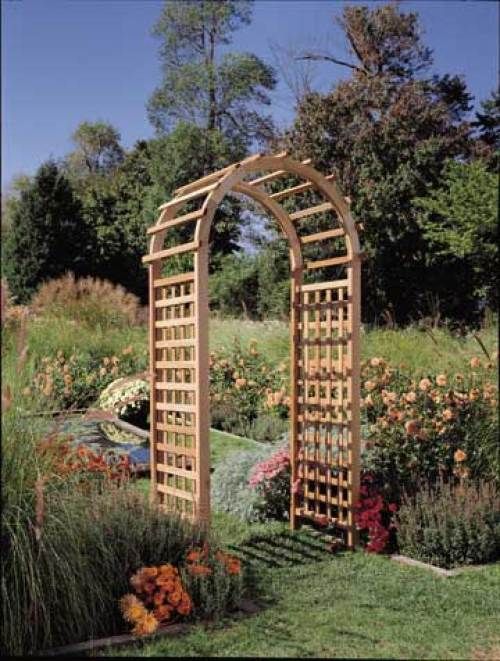

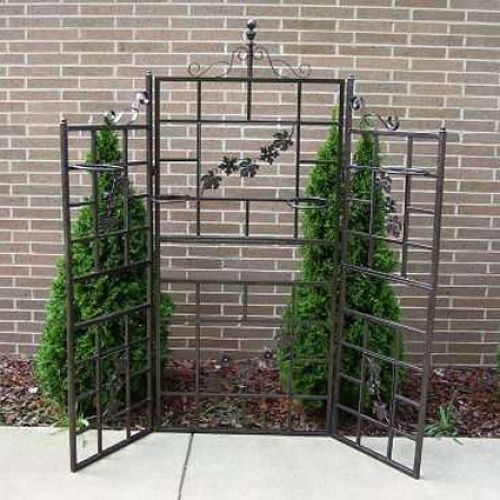
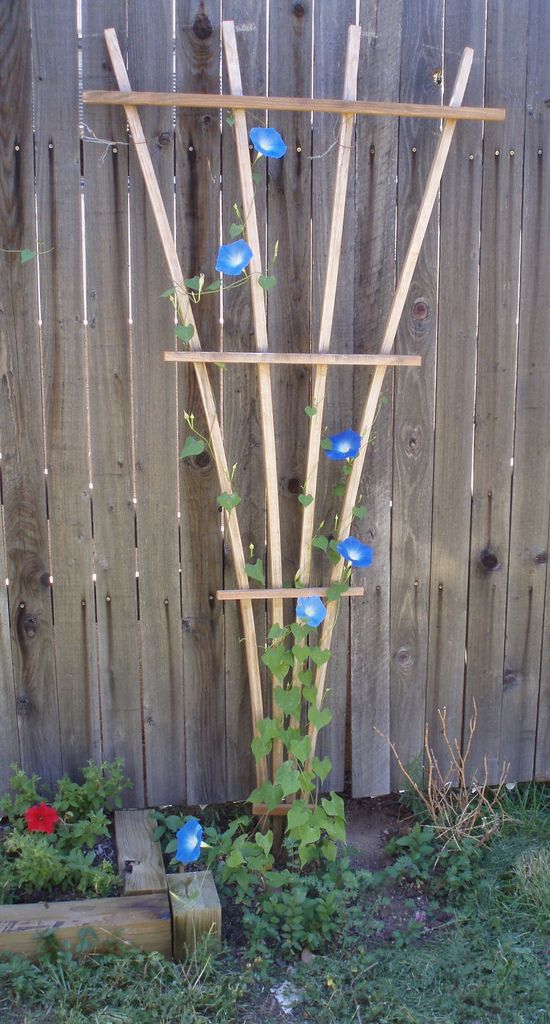
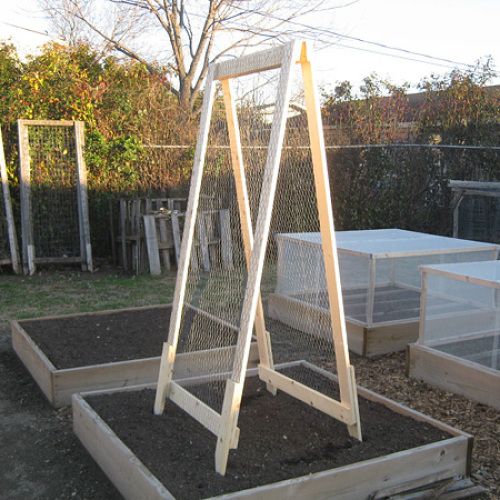


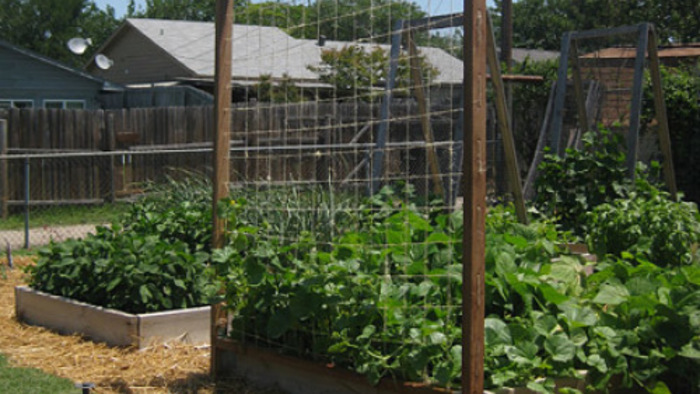
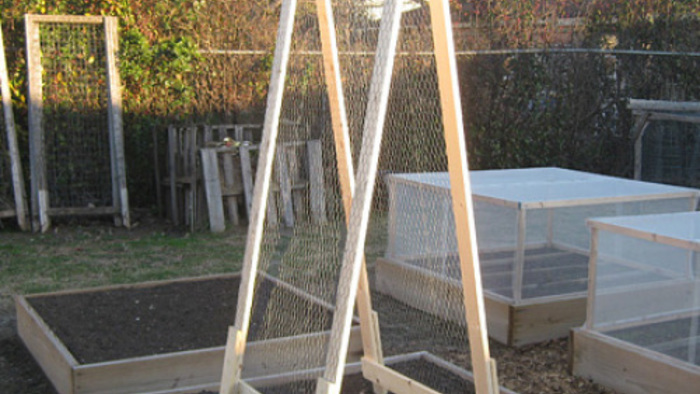












Comments
Log in or create an account to post a comment.
Sign up Log in